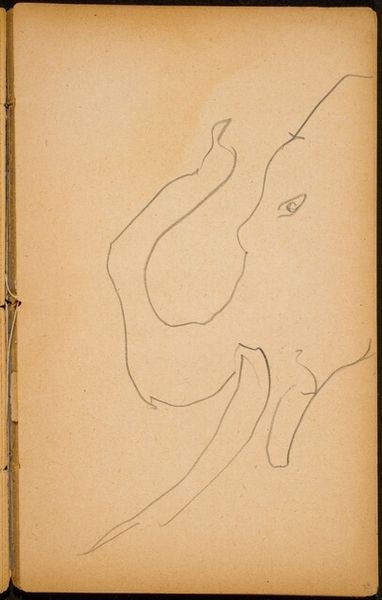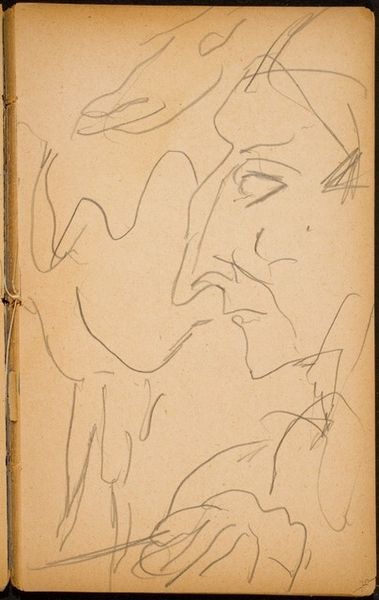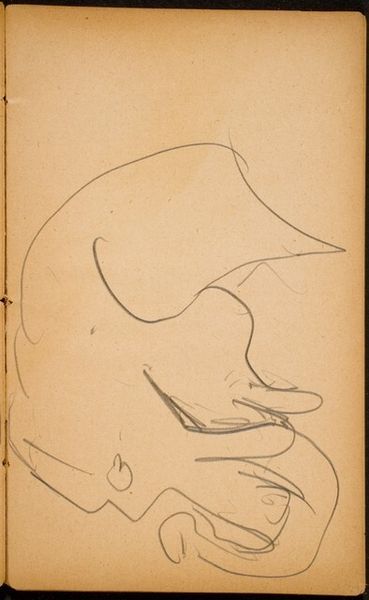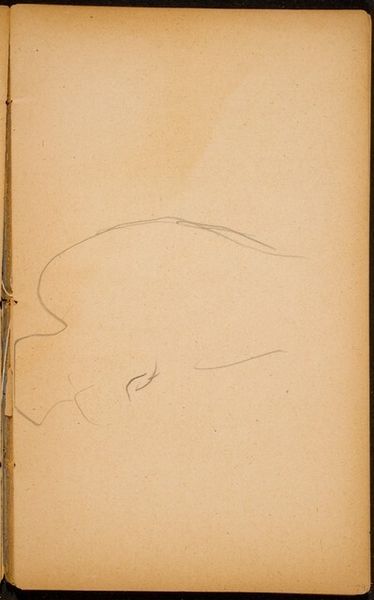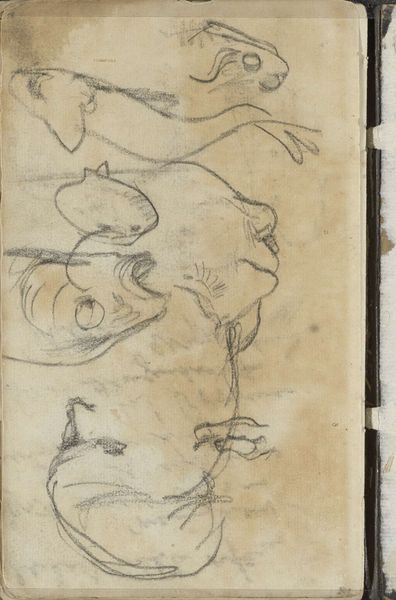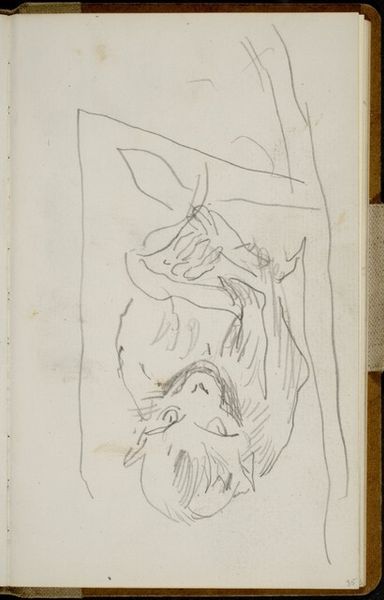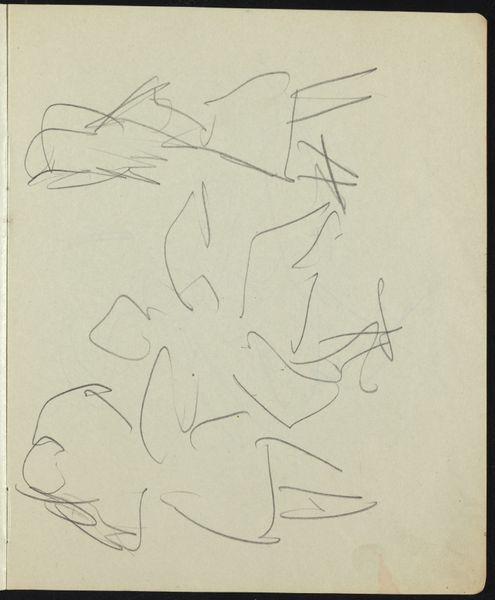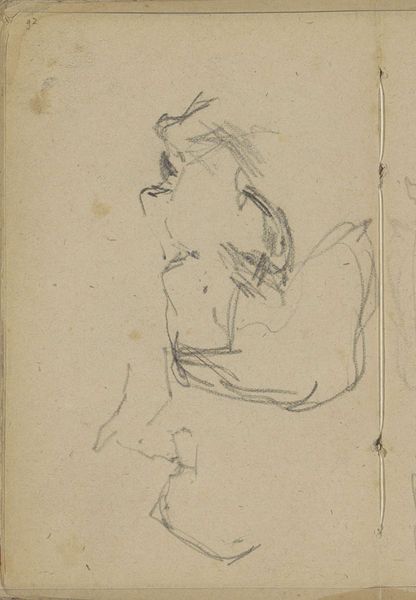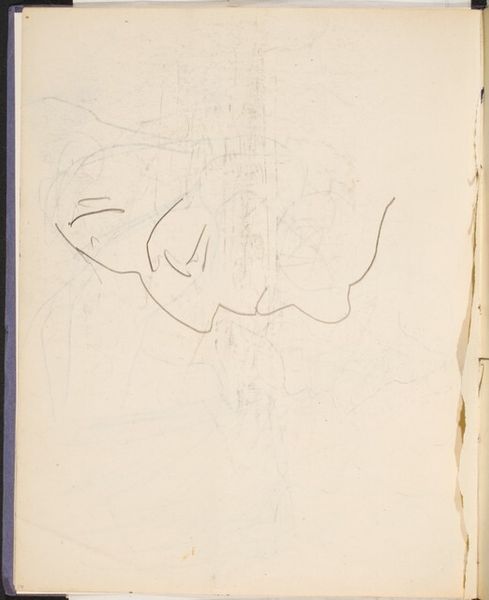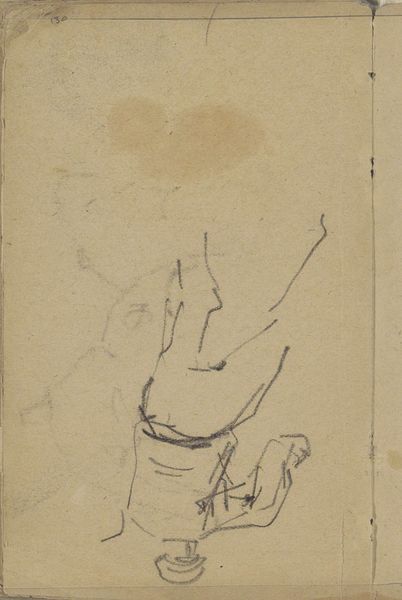![Elefanten (Elephants) [p. 25] by Max Beckmann](/_next/image?url=https%3A%2F%2Fd2w8kbdekdi1gv.cloudfront.net%2FeyJidWNrZXQiOiAiYXJ0ZXJhLWltYWdlcy1idWNrZXQiLCAia2V5IjogImFydHdvcmtzL2I2YmEzNWE0LTFmZjgtNDc5Ni1iZmFhLWRhYTRmYzAzNTE0Yy9iNmJhMzVhNC0xZmY4LTQ3OTYtYmZhYS1kYWE0ZmMwMzUxNGNfZnVsbC5qcGciLCAiZWRpdHMiOiB7InJlc2l6ZSI6IHsid2lkdGgiOiAxOTIwLCAiaGVpZ2h0IjogMTkyMCwgImZpdCI6ICJpbnNpZGUifX19&w=828&q=75)
drawing, pencil
#
drawing
#
figuration
#
abstract
#
pencil
#
line
Dimensions: overall: 16.2 x 10 cm (6 3/8 x 3 15/16 in.)
Copyright: National Gallery of Art: CC0 1.0
Editor: This pencil drawing is titled "Elefanten (Elephants) [p. 25]" by Max Beckmann, and what strikes me most is how abstracted the forms are. It almost feels like a secret code depicting these massive animals. What do you see in this piece, from your perspective? Curator: Well, I'm immediately drawn to the seeming disjunction between the implied monumentality of the subject—elephants, as you say, large and imposing creatures—and the delicate, almost fragile, nature of the sketch. This tension reflects, I think, the socio-political climate of interwar Germany. Beckmann, associated with the New Objectivity movement, often explored themes of societal disruption and the fragility of the human condition. Do you think this connects with public anxieties around industrialisation, which perhaps leads to a fear of the natural world fading away? Editor: That’s a great point! So you’re saying that Beckmann might be using the elephants not just as animals, but as symbols of a fading natural world amidst social upheaval? Curator: Exactly. The abstraction and almost ethereal quality, achieved through the delicate lines, suggests not only the loss of grandeur of the natural world, but also the impact of urbanization on traditional life, which the elephants could represent in a cultural or perhaps even colonial context. What about the page number; does it seem like it was a drawing in preparation of a different work? Editor: It certainly makes it seem like it’s part of a larger series. That context helps give it meaning beyond a simple study of elephants, suggesting a deeper commentary about the human condition. I’ll never look at an elephant sketch the same way again! Curator: Indeed! Recognizing the dialogue between the artist, the socio-political context, and the viewer is what truly enriches our understanding of art.
Comments
No comments
Be the first to comment and join the conversation on the ultimate creative platform.

